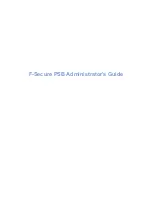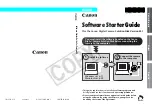
T
Ta
allk
k T
Ta
arrg
ge
ett C
Cu
urrv
ve
e
Besides the Target Curves of Master X5 – Linear, Pink, Hyped
and Smiley – there is a fifth Target Curve available in Master
X5. The “Talk” curve is designed for use on spoken material
and works best with the MID slope.
TC MASTER X5 – PARAMETERS
11
S
Sllo
op
pe
e
This is a new feature in Master X5: The slopes of the 5
bands can be switched from SYM (symmetrical filter slopes)
to MID (mid frequency based filter slopes). The SYM slopes
will fit better to music signals, whereas the MID setting is
the preferred choice for speech processing.
S
SY
YM
M
M
MIID
D
TC MASTER X5 – PARAMETERS
10
D
Diitth
he
erriin
ng
g
When clicking on the Dithering pop-up, you will notice that there are
entries stating “quantized” in the end. Both types of dithering are
uncorrelated stereo dithering algorithms, the difference is in the audio
“below” the dithered bits: Having a 24 bit signal dithered to 16 bit will
add the dither noise to the 16th bit. The rest of the audio will remain
unchanged. The quantized dithering will set all bits lower than the bit
depth defined by the dithering to zero. This way, the output signal of
Master X5 will be a signal limited to 16 bit – there’s no more informa-
tion inside the signal. If you are not sure, the quantized dithering
would be your choice.
W
Wh
hy
y lle
essss m
miig
gh
htt b
be
e m
mo
orre
e,, o
orr:: W
Wh
hy
y tto
o u
usse
e M
Ma
asstte
err X
X5
5
It is quite common to think that more compression bands will automatically bring the
better result. Unfortunately we have to tell you that this isn’t the whole truth: It might
also make sense to use Master X5 with “just” 3 bands instead of Master X5.Why? Let’s
have a look at the frequency range relevant for audio recordings: This range, starting at
20Hz, goes up to 20 kHz. This makes a range of 10 octaves.
Simple cut filters have a filter slope of 6 dB/oct. If you have 5 bands, there are 4 cross-
over frequencies dividing the frequency range. Let’s imagine we have the crossovers set
to 1 kHz,
2 kHz, 4 kHz and 8 kHz.
The low band (with the 1 kHz cut-off frequency) will be lowered by 6 dB at 2 kHz and by
12 dB at 4 kHz – this will show easily that the low band will still effect the higher bands.
Ok, so let’s take filters with a higher slope, to get the bands separated better. This will
of course work, but also introduce other problems. For example will filters with a higher
filter slope cause phase shifting depending on the signal frequency.At the very least, this
might cause at least coloration of the sound – and might even create a moody sound
impression.
And this is a good reason to use a multi-band compressor with less bands than
technically possible: a cleaner sound.
M
Ma
ak
ke
e--U
Up
p ((A
AU
UT
TO
O//O
OF
FF
F))
This parameter enables the power of automatic make-up gain and
thus delivers the highest possible output level without you having to care about it.
By default, this parameter is switched on (in Master X5, Auto Make-Up is always
active). By switching it off, the band levels will be lowered according to the current
Threshold/Attack settings of the compressor. Therefore, the sound impression will
change:With Auto Make-Up active, the sound will function according to the target
curve (e.g. with the “Smiley” curve you will get more low end and more high end,
but less mids), with Auto Make-Up switched off, you still get more compression on
high and low bands. But without automatic make up gain, the output level of
these bands will be lower. By moving up the band levels manually, you can
adjust this as you like.
A
Accttiiv
va
atte
e//D
De
ea
accttiiv
va
atte
e B
Ba
an
nd
dss
Master X5 offers the possibility to switch off bands. This way, you can reduce
Master X5 to 4-, 3-, 2- or even single-band compression.
Band #1
Band #3
Band #4
Band #5
Band #2
Band #1
Band #3
Band #4
Band #5
Band #2






























